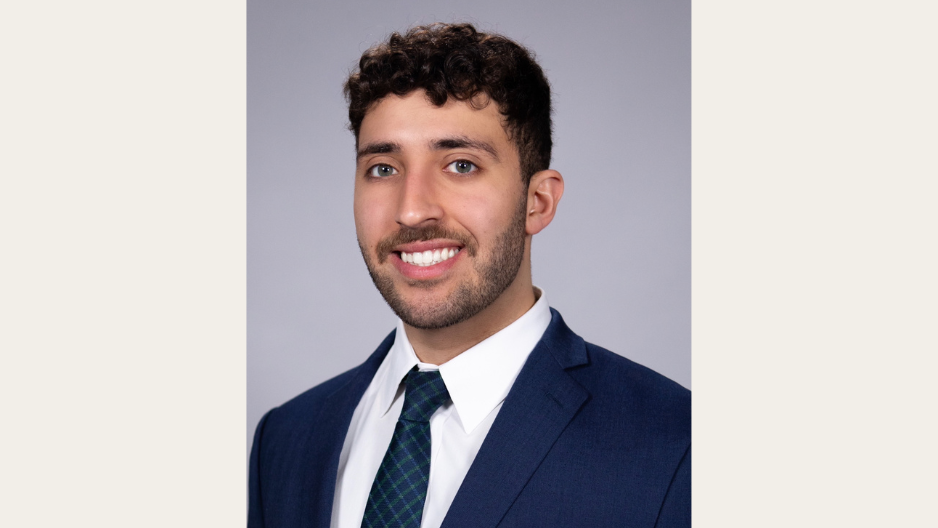Fourth-year medical student Nassim Stegamat is no stranger to hard work. From diving into research during his earliest days at the Lewis Katz School of Medicine (Katz) to earning competitive scholarship support, his journey is marked by motivation, resilience, and recognition.
This fall, Stegamat was awarded First Place and the Grand Prize for Best Abstract and Oral Presentation at the 111th Pennsylvania Neurosurgical Society Meeting, a prestigious gathering of neurosurgical professionals, residents, and students from across the state. His winning presentation featured a novel chemo-genetic approach to treating Parkinson’s Disease using rat animal models.
“I was in complete shock when I received first place,” Stegamat said. “I truly did not know that our presentations were being considered for a final prize. When I found out that not only were our presentations being scored, but that I had won first place, I was honored.”
A Student-Led Idea, Backed by Mentorship
Stegamat’s interest in neuroscience and neurosurgery began early in his medical school journey, when he sought opportunities to gain hands-on research experience. That drive led him to the lab of George Smith, PhD., Director of the Center for Neural Development and Repair, whose team focuses on experimental neurosurgical treatments using animal models.
“I wanted to get involved in research very early in my medical school career and I knew I was interested in neurosurgery,” he explained. “I looked up Dr. Smith’s lab and saw that they do hands-on neurosurgical experiments on rats, and I was extremely motivated to get involved.”
According to Dr. Smith, Nassim brought the core idea to the table. “He read a paper on the phenotypic conversion of glutamatergic neurons to Gamma-aminobutyric acid (GABA) in the subthalamic nucleus. Since the subthalamic nucleus is the target of deep brain stimulation to alleviate the symptoms of Parkinson’s disease, he thought it would be a good target,” Smith said. “Nassim basically came up with the idea.” He added.
The project involved combining gene therapy to convert neurons with the use of designer receptors activated by designer drugs (DREADDs), a tool already familiar to the lab. “His approach was creative, combining the GABAergic phenotypic switch, which we typically do not do in my lab, with DREADDs, which we routinely use,” Smith said. “He also did the majority of the surgeries and behavioral analyses.”
Once he joined the lab, Stegamat found a rewarding balance of autonomy and mentorship, one that deepened both his technical skills and sense of purpose. “I was sold by the ability to work autonomously while simultaneously being mentored by Dr. Smith,” he said. “This experience overall has furthered my interest in neuroscience and supported my goal of becoming a neurosurgeon.”
For Dr. Smith, success is about what it unlocks for the student. “It isn’t about what it means to me or the center, but how it improves the career development of the student,” he said. “Nassim wants to match with a good neurosurgical residency program. I only want to help him reach that goal, and if his research project helps, all the better.”
Looking Ahead
With his final year of medical school underway, Stegamat is now focused on preparing for residency, a process where his recent conference achievement will likely stand out.
“I hope this achievement supports the rest of my residency application and allows me to match into a residency congruent with my interests,” he said.
Whatever comes next, it is clear that Stegamat’s passion for research, his commitment to patient care, and the support of the Katz community have built a strong foundation for a promising future in neurosurgery.

